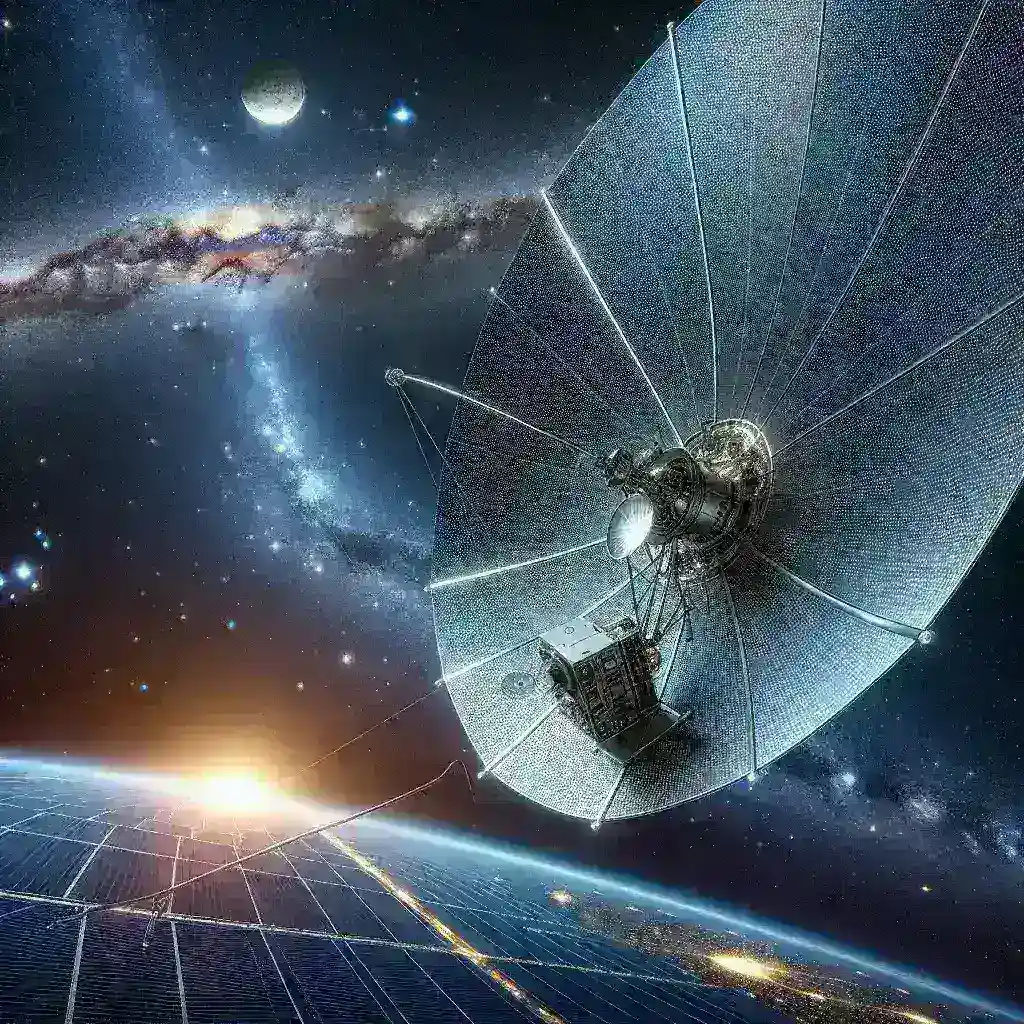NASA Confirms Testing of Solar Sail Propulsion for Deep Space Missions

Introduction
In a significant leap towards revolutionizing space travel, NASA has confirmed the testing of solar sail propulsion technology that holds immense potential for deep space missions. Unlike traditional propulsion systems that rely on fuel, solar sails utilize the pressure of sunlight to propel spacecraft, paving the way for more sustainable and efficient space exploration. This article delves into the intricacies of solar sail technology, its historical context, current testing phases, and its promising future in the realms of astronomy and interstellar travel.
The Concept of Solar Sail Propulsion
Solar sail propulsion is a novel concept that harnesses the energy generated by sunlight to propel a spacecraft. The mechanism is based on the principle of light pressure; as photons from the sun collide with the sail, they transfer momentum, generating thrust without the need for conventional fuel. This innovative method offers several key advantages:
- Efficiency: Solar sails require no fuel, significantly reducing the weight and cost of space missions.
- Longevity: Missions utilizing solar sails can operate for extended periods, making them ideal for long-duration space travel.
- Speed: Solar sails can continuously accelerate as long as they are exposed to sunlight, potentially reaching high velocities.
A Brief Historical Overview
The idea of using solar sails for propulsion dates back to the early 20th century, with visionary thinkers like Johannes Kepler and later, Carl Sagan, advocating for such technology. However, it wasn’t until the 21st century that the concept began to materialize. Notably, the Japanese spacecraft IKAROS (Interplanetary Kite-craft Accelerated by Radiation Of the Sun) successfully demonstrated solar sail propulsion in 2010, paving the way for subsequent research and development.
NAVY’s Recent Tests
NASA’s recent confirmation regarding solar sail tests marks a new chapter in the advancement of this technology. The agency is currently conducting a series of experiments to evaluate the effectiveness of solar sails in various conditions. These tests are crucial for understanding how solar sails can be deployed in deep space missions.
Testing Phases
The testing of solar sail technology by NASA comprises several phases:
- Initial Development: This phase focuses on designing and constructing prototype solar sails.
- Ground-Based Testing: Following the prototype development, ground tests simulate the conditions of space to assess performance and durability.
- In-Space Testing: Finally, successful prototypes will undergo real space missions to evaluate their performance in actual flight conditions.
The Future of Deep Space Exploration
The implications of solar sail technology extend far beyond its current applications. As humanity looks towards ambitious missions to Mars, Europa, and even interstellar destinations, solar sails could become an essential component of future spacecraft design. The advantages of solar sails can significantly enhance mission profiles:
1. Potential for Interstellar Travel
Solar sails could enable spacecraft to travel to distant stars at unprecedented speeds. By continuously gaining momentum from solar radiation, a spacecraft equipped with a solar sail could reach velocities that make interstellar journeys feasible within human lifetimes.
2. Cost-Effectiveness
As missions become increasingly ambitious, the need for cost-effective solutions becomes paramount. With the elimination of fuel requirements, solar sails represent a financially viable option for future missions to the outer planets and beyond.
3. Versatility
The adaptability of solar sails to different missions enhances their utility. They can be deployed for asteroid mining, space telescopes, and other exploratory endeavors, transforming our approach to space exploration.
Challenges Ahead
While the benefits of solar sail technology are considerable, there are still challenges to overcome:
- Material Durability: The materials used for solar sails must withstand the harsh conditions of space, including radiation and micrometeoroid impacts.
- Navigation and Control: Steering a solar sail requires precise adjustments, as the craft must orient itself relative to the sun to maximize thrust.
- Public Perception: Engaging the public and stakeholders about the potential of solar sails is crucial for securing funding and support for future projects.
Conclusion
The confirmation of solar sail propulsion testing by NASA is a pivotal moment in the journey toward sustainable deep space exploration. As research progresses and testing continues, the prospects for solar sails appear increasingly promising. This technology not only exemplifies human ingenuity but also opens a new frontier in our quest to explore the cosmos. With the potential to revolutionize how we travel beyond our solar system, solar sails may very well redefine the future of space exploration for generations to come.
FAQs
1. How does a solar sail work?
A solar sail works by utilizing the pressure of sunlight on its surface to generate thrust, allowing a spacecraft to accelerate without the use of fuel.
2. What are the primary advantages of solar sails?
Solar sails are efficient, long-lasting, and can achieve high speeds, making them ideal for deep space missions.
3. What challenges does solar sail technology face?
Challenges include material durability, navigation, and public perception regarding its potential.
4. When can we expect solar sails to be used in actual space missions?
While specific timelines are not yet confirmed, ongoing testing and development will pave the way for potential missions within the next decade.
Leave a Reply